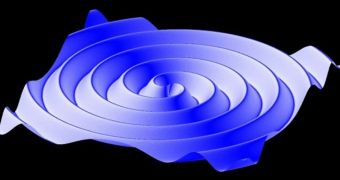Some of the most puzzling observations that cosmologists made over the past few decades could readily be explained by the influence gravitational waves have on the way we view the Universe from our vantage point. But experts need to identify these waves if they want to use this explanation.
If the waves indeed exist, then their very presence and motion through the spacetime of the Cosmos could explain the distorted view of the Universe that puzzles astronomers, and mixes up some many scientific theories.
One of the most mysterious occurrences we've observed thus far is the fact that the entire Cosmos appears to be not only expanding, but doing so at an ever-accelerating pace. Finding an explanation for why this happens is still an open endeavor.
We drew the conclusion that all galaxies are flying away from us, and from each other, based on observations of distant galaxies at given times. Their motions appear to be accelerated, their courses set away from each other.
Interestingly enough, more recent studies have also demonstrated that the Big Bang did not produce its famed echoes with the same intensity and energy in all directions, but rather tended to develop certain axes. The most important direction of the latter group is called the Axis of Evil.
The reason why this discovery is so problematic is that it produces evidence to support a minority of astronomers suggesting that the Universe is not uniform, but exhibits large fluctuations throughout. This may also imply that several constants – such as the speed of light – may also vary with distance.
Cardiff University astronomer Edmund Schluessel proposes today, September 22, that the mere presence of gravitational waves may help explain these weird readings. The waves are produced by interactions between massive objects, such as black holes, and also by the Big Bang.
In other words, they are nothing but distortions, ripples if you will, in the spacetime fabric of the Universe. If they exist, then they exert a significant influence on the way we perceive light, another radiation coming from objects that existed only a few million years after the Universe formed.
“Strong long-scale gravitational waves can explain cosmic acceleration within the context of general relativity without resorting to the assumption of exotic forms of matter such as quintessence,” the researcher explains, quoted by Technology Review.

 14 DAY TRIAL //
14 DAY TRIAL //